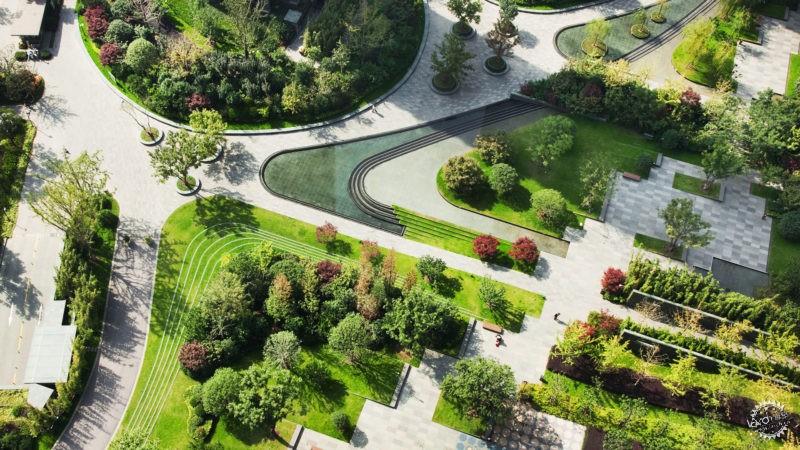
为什么一些景观设计研究生不了解种植?
Why Do Some Graduate Landscape Architects Have a Poor Understanding of Planting?
由专筑网孙佳,邢子编译
文章来自Kamil Rawski。在本文中,我们将研究年轻的专业人士对于作为景观设计师应该知道的种植方面所缺乏的知识。在追求景观学位的过程中,学生有机会获得丰富的种植知识,但与其他学科一样,有些学生会比其他学生更认真对待这个问题。
由于植被的大小,形状及其美学特性,通常设计种植计划被简化为组成不同的空间形式。理论上,设计师总是能够通过适当的种植使场地更有吸引力,主要是因为大多数人喜欢鲜花组合的多彩形式。然而,观赏植物并不是可以使用的唯一植物。将植被作为景观的重要元素进行处理,并通过用植物构建个别空间或创造特定的绿色节奏来使空间更加美化,这可以引导人们的眼睛到达所需的地方。
然而,与硬景观元素不同,植物不能仅仅因为它们“看起来很好”或“匹配”该场地而被选择。相反,设计师必须考虑各种因素,包括种植区,需水量,光照要求和土壤酸度等等。然而不幸的是,书本上的内容并不总是在现实世界中起作用,因此必须小心选择适合的地点进行种植。
Article by Kamil Rawski In this article we examine what knowledge young professionals lack about planting that every landscape architect should know. In the pursuit of a landscape architecture degree, students have the opportunity to acquire a wealth of knowledge on planting, but as with other subjects there are some students who take this issue more seriously than others. Very often creating planting plans is reduced to composing different spatial forms due to size, shape, or aesthetic qualities of vegetation. In theory, designers are always able to make a space more attractive to the user by applying appropriate plantings, mainly because most people enjoy colorful combinations of blooming flowers. However, ornamental plantings aren’t the only situation where plants can be used. Treating vegetation as a vital element of the landscape can make the space more desirable by framing individual spaces with plants or by creating a specific rhythm of greenery, which could direct the viewer’s eye to the desired place. However, unlike hardscape elements, plants cannot be chosen simply because they “look good” or “match” the site. Rather, a variety of elements must be considered including planting zone, water needs, light requirements, and soil acidity, to name a few. It is important to keep in mind that what appears great on paper, unfortunately, doesn’t always work in the real world, so care must be taken to choose the appropriate plantings for each site.
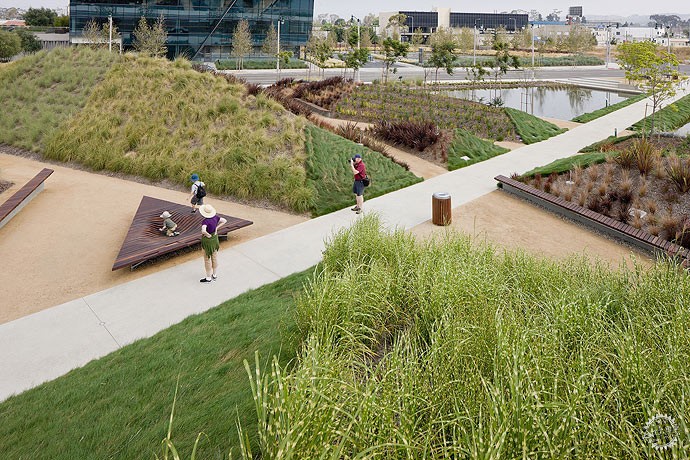
加州普拉亚维斯塔中央公园由Michael Maltzan Architecture + Office of James Burnett设计/Playa Vista Central Park in California by Michael Maltzan Architecture + Office of James Burnett. Credit: Michael Maltzan Architecture
景观在未来的时间将永远告诉我们是否选择了适当的植物。这是我想突出“ 植物选择 ”这个词的地方,因为本文的其余部分将专门讨论这个问题。种植项目的设计应该使最终产品看起来好像设计师在完成后多年才设想它。
许多景观设计研究生也忘记了植物的形态和生长速度各不相同,因此计划效果并不总是立即可见。每平方米设计太多的植物通常是缺乏这种知识的结果。此外,很多年轻的专业人士经常低估园艺知识,但掌握植物规模是一项非常重要的技能。除了让植物看起来像设计师计划的那样,它们还应该满足许多环境和自然条件。以下为一些分析要素。
Planning the Future Garden Time will always tell if we have selected the proper plants. This is where I would like to highlight the words “plant selection“ because the rest of the article will be dedicated to this issue. Planting projects should be planned in such a way that the final product looks as if the designer envisioned it even many years after completion. Many graduate landscape architects also forget that plants vary in form and growth rate, so the planned effect is not always visible right away. Designing too many plants per square meter is often the result of a lack of such knowledge. Additionally, young professionals often underestimate horticultural knowledge, but plant specification is a very important skill. Apart from the fact that plants are supposed to look as the designer planned, they should also fulfill a number of environmental and natural conditions. The following elements are analyzed below.
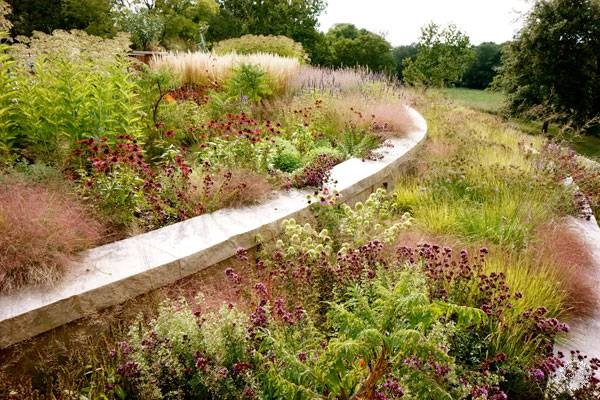
密苏里州园林设计师Adam Woodruff种植多年植物的方案/A planting scheme of perennials and grasses by Missouri-based garden designer Adam Woodruff. Credit: Adam Woodruff
植物所面临气候的反应是不同的,因此应始终考虑选择在特定抗寒区域种植的植物。这些区域由美国农业部开发(USDA)在地理上定义,其中归类了特定类别的植物以及适于生长的环境。大多数情况下,它与抵抗各个区域的最低温度的能力有关,因此在一些国家,它也被称为抗冻区。如果植物对特定区域有耐力,则意味着它能够适应该区域的最低温度。在设计植物选择时,还必须考虑由气候引起的各种因素,包括温度,年降雨量,积雪,主导风的方向和植被生长周期的长度等等。
Climatic Conditions All plants are sensitive to varying temperatures, so selecting plants that work in the specific hardiness zones should always be taken into account. These zones were developed by the United States Department of Agriculture (USDA) and they are geographically defined areas where a specific category of plants are suitable to grow and function normally. Mostly, it is related to the ability to resist the minimum temperatures in individual zones, so in some countries it is also known as frost-resistant zones. If the plant is hardy to a specific zone it means that it’s able to resist the lowest temperature assigned to this zone. While planning plant selections there are also a variety of elements due to climate that must be considered including temperature pattern, annual rainfall, snow cover, direction of dominating winds, and length of vegetation period, to name a few.
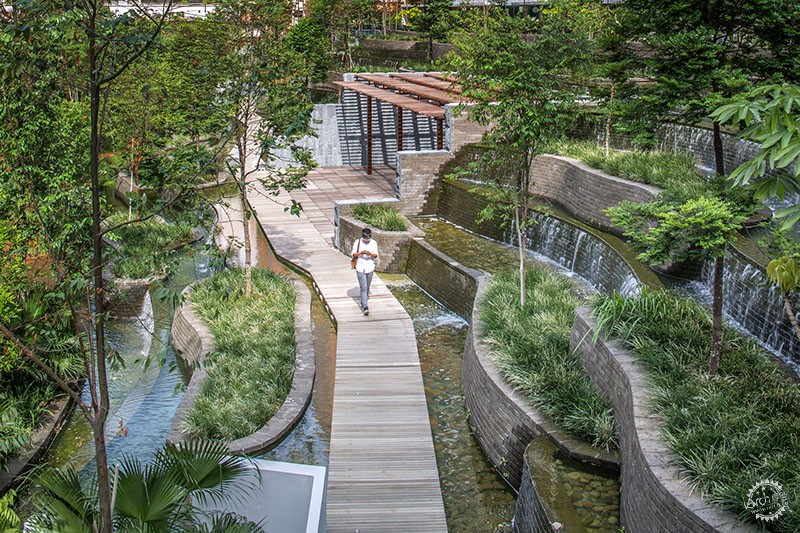
The Minton位于新加坡,由DP建筑设计/The Minton located in Singapore by DP Architects. Credit: Marc Tey Photography
土壤条件,我认为没有必要重申在植物选择的情况下基层的重要性。关于哪种植物需要酸性,碱性或中性土壤的知识非常有用。利用该信息,可以制备正确的基层。同时了解哪些植物组合在一起也很重要,水分含量也是如此。有些植物需要比其他植物更干燥的基质,并且通过土壤和水分需要对植物进行分组,可以帮助确保其时效性。最后,土壤渗透性和肥力是值得一提的另一个考虑因素。当然,这一切都归结为植物整体环境要求。 场地部分与先前讨论的主题相关。但是,还有一些方面值得进一步研究。必须考虑诸如场地地形和可以种植多少空间等因素。一个好的做法是对每个地点进行遮阳,日照和防风罩分析。此外,重要的是要记住,每个植物都需要不同的环境来确保其更好地生长。
Soil Conditions I don’t think it’s necessary to reiterate how important the substrate is in the case of plant selection. Knowledge about which species of plants need acid, alkaline, or neutral soil is very useful. With this information, the right substrate can be prepared. Along these lines, knowing which plants to group together is also important, as is moisture content. Some plants need drier substrate than others and by grouping plants by their soil and moisture needs one can help to ensure longevity. Finally, soil permeability and fertility is another consideration that is worth mentioning. Of course, it all comes down to the plants’ overall environmental requirements. Location The location is partially related to the previously discussed topics. However, there are also aspects that are worth further investigation. Factors such as site topography and how much space can be planted must be considered. A good practice is to perform shade, insolation, and wind shelter analysis of the site for each location. Also, it is important to keep in mind that every plant needs a different environment to thrive.
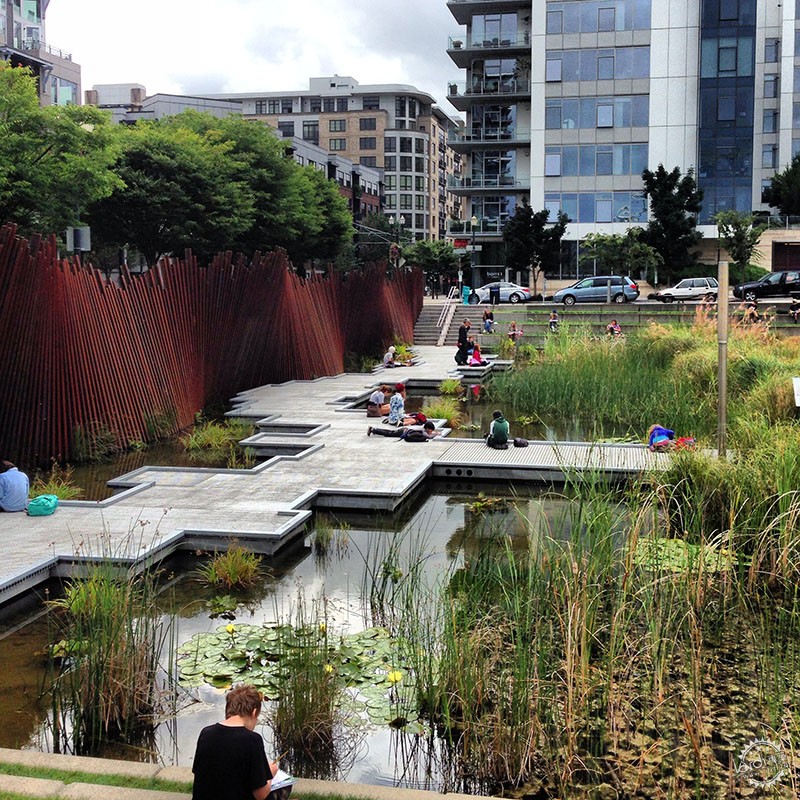
俄勒冈州波特兰的坦纳斯普林斯公园,由Atelier Dreiseitl和GreenWorks PC设计/Tanner Springs Park in Portland, Oregon by Atelier Dreiseitl and GreenWorks PC. Credit: Debbie Lusk
此外,只有一些植物具有耐污染性,因此选择适合城市或工业区的植物非常重要。某些情况下,在某些地点种植所选植被之前,需要进行土壤复垦。景观设计研究生强烈低估的一些最有用的信息是植物社会学的知识,以及与植物群落有关的科学知识。在我看来,使用本地物种进行设计是植物选择的最佳实践。使用可能参与生态演替的植物将使我们更有可能使植物繁盛。那么,问问自己......如果它没有被触及,那么这些植物会不会出现在这个地方?然而, 有许多属性影响视觉效果。在拒绝不符合给定场地要求的植物后,如果想要增加项目价值,则应从以下特征选择植物:
植物形态(伞形,柱形,密集形,圆锥形,球形等)
颜色(观赏花卉,叶子,果实)
大小(高,中,小乔/灌木)
增长速度(快速增长,增长缓慢)
植物结构(落叶,针叶)
秋季叶片变色或常绿植物
Furthermore, only some plants are pollution-tolerant so it’s important to select proper plants for urban or industrial areas. In addition, soil reclamation will be needed, in some cases, before planting the chosen vegetation for heavily neglected sites. Some of the most useful information that is strongly underestimated by graduate landscape architects is knowledge of phytosociology—the science relating to plant communities. Using native species to design is, in my opinion, the best practice for plant selection. The use of plants that would have taken part in an ecological succession will give us a higher probability that the plants will flourish. So, ask yourself…what plants would have settled in the site if it was left untouched? However, what can’t be forgotten is that some native species are invasive and it’s strictly recommended to avoid them. Physical Aspects There are many attributes that are responsible for the visual effect. After rejecting plants that do not meet the requirements of the given habitat, if one is wanting to increase the project value then plants should be chosen for such features as:
plant form (spreading, columnar, dense, conical, spherical, etc.)
color (ornamental flowers, leaves, fruits)
size (tall, medium, low trees/shrubs)
speed of growth (quick-growing, slow-growing)
structure of plants (deciduous, coniferous)
discoloration of leaves in autumn or evergreen species
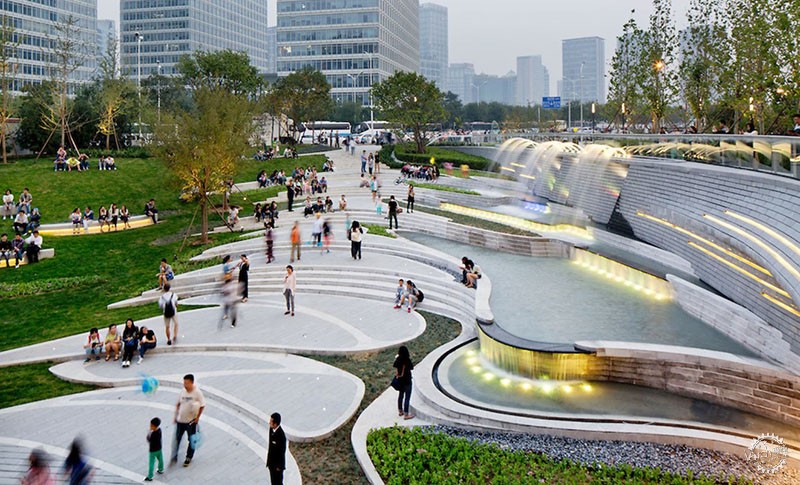
由扎哈•哈迪德建筑师事务所和易兰设计团队在北京设计的银河 SoHo公共广场/Public plaza of the Galaxy SoHo designed by Zaha Hadid Architects and EcoLand Design Group in Beijing. Credit: Hai Zhang
重要的是要记住,适当的植物间距会对最终结果产生巨大影响,因此考虑成年植物的大小是关键。最终,学校应更加重视学习园艺知识以及植物生理学的基本问题。了解这些方面将使未来的景观设计师能够更好地设计种植,并在他们选择的职业中变得更加全面。最重要的是探索当地特色,并根据其场地要求选择植物。当然,一个方面是植物的后续护理,但这是另一篇文章的主题。 您是否同意园艺知识在景观建筑行业中非常重要? 让我们知道您的想法并发表评论。
- 特色图片:江湾城一期|中国南京|Cicada|2016
It’s critical to keep in mind that the appropriate plant spacing will have a huge impact on the final result, therefore it’s key to consider the size of the adult plant. Ultimately, schools should put more emphasis on learning horticultural knowledge as well as basic issues about plant physiology. Understanding these aspects will allow future landscape architects to better plan plantings and become more well-rounded in their chosen occupation. The most important thing is to explore the area and select and segregate the plants according to their habitat requirements. Of course, a separate aspect is the subsequent care of plants, but that is a topic for another article. Do you agree that horticultural knowledge is very important in the landscape architectural profession? Let us know what you think and leave a comment.
— Featured image: Jiang Wan Cheng Phase 1 | Nanjing, China | Cicada | 2016
|
|
